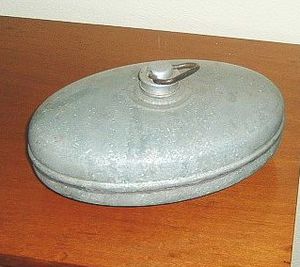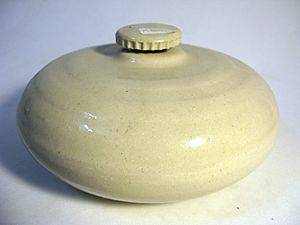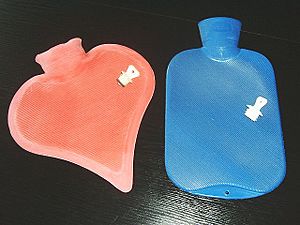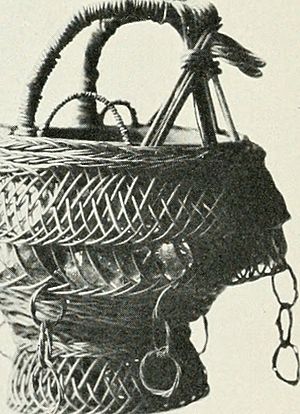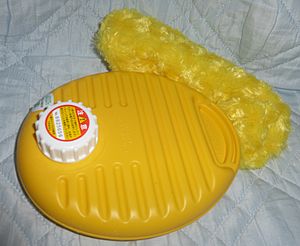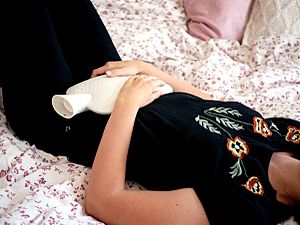Hot water bottle facts for kids
A hot-water bottle is a special bottle that you fill with hot water. It has a stopper to keep the water inside. People use them to stay warm, especially in bed. They can also help soothe aches and pains on your body.
Contents
History of Hot-Water Bottles
People have used containers to warm their beds since the 1500s. The very first versions were called bed warmers. They held hot coals from a fire. These were used to warm the bed before someone got into it.
Soon, people started using containers filled with hot water. These were better because they could stay in the bed with you. They were also safer and less likely to cause a fire.
Before rubber was invented, hot-water bottles were made from many different materials. These included zinc, copper, brass, glass, earthenware, or wood. Metal bottles were often wrapped in a soft cloth bag. This helped prevent burns.
Modern Rubber Bottles
Hot-water bottles made from rubber were used in Britain by 1875. The modern hot-water bottle was patented in 1903. A Croatian inventor named Eduard Penkala designed it. Today, they are often covered in soft fabric, sometimes with fun designs.
Some newer products work like old bottles but use a polymer gel or wax. These are often called heating pads. You can heat them in a microwave oven. They are seen as safer than bottles filled with liquid or electric heating pads. Some new bottles are made from silicone. This material handles very hot water better than rubber. It also lasts longer. Many newer bottles have a wider opening. This makes them easier to fill.
Hot-water bottles are mostly used for warmth. But they can also help with pain. For example, they can ease period pain. However, special heating pads are now often used for medical treatments.
Safety Rules and Regulations
The United Kingdom has special rules for hot-water bottles. These are called British Standards (BS 1970 and BS 1970:2012). These rules make sure bottles are made safely and correctly. They cover things like how to fill them, what materials to use, and how to test them. These tests check how strong the bottles are.
Most countries try to have similar safety rules. This helps make sure products are safe everywhere they are sold.
Possible Problems and How to Stay Safe
Sometimes, rubber hot-water bottles can break too soon. This can happen if they are not made well. The rubber might not be strong enough. Or it might become brittle. This means it can crack easily.
Most bottles are made from natural rubber with calcium carbonate. But this material can get damaged by heat and air. Even if you cannot see cracks, a bottle can suddenly break when filled with hot water. This can cause severe burns. Sometimes, people even need to go to the hospital.
It is not recommended to use boiling water in a hot-water bottle. Very hot water can damage the rubber. It also increases the risk of serious injury if the bottle breaks.
Using a hot-water bottle too much or for too long can also cause a skin condition. This is called hot water bottle rash (Erythema ab igne). It looks like a net-like pattern on the skin.
Hot-Water Bottles in Stories
Hot-water bottles have even appeared in children's shows and comics!
- Alfred is a grumpy hot-water bottle character. He was in Johnson and Friends, a popular Australian children's TV show from the 1990s. Many people who watched the show as kids still remember him.
- Another hot-water bottle character was Walter Hottle Bottle. He was in the British children's comic Jack and Jill.
See also
 In Spanish: Bolsa de agua caliente para niños
In Spanish: Bolsa de agua caliente para niños


